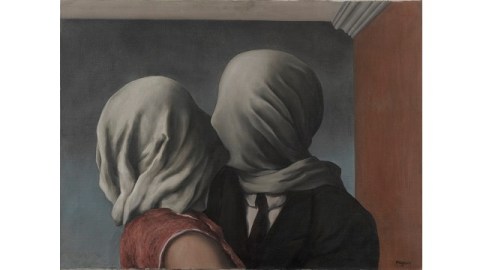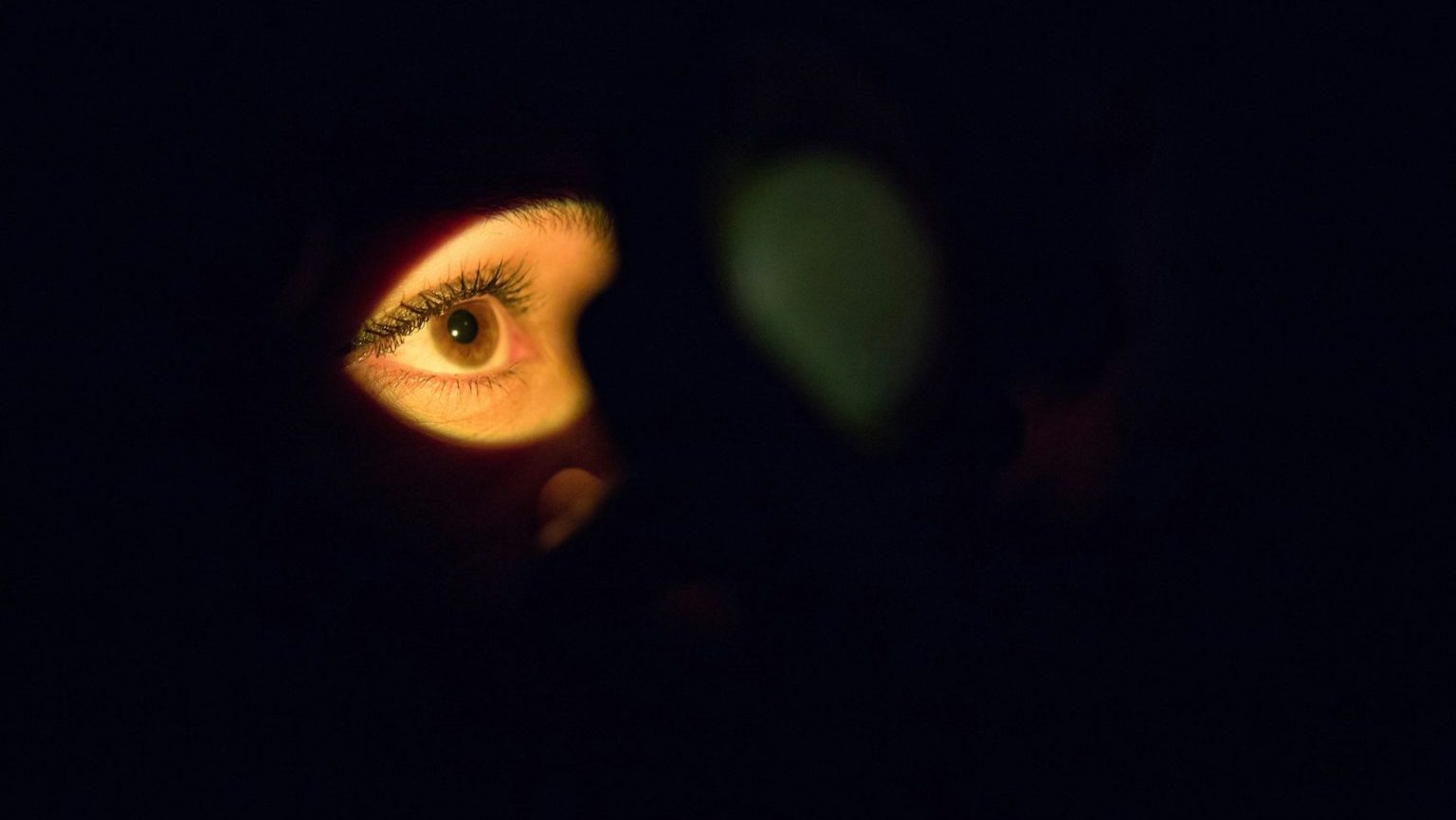The Darker Side of Magritte, the Kinder, Gentler Surrealist

Is any artist linked inseparably with an article of clothing as René Magritte and the bowler hat? Whether raining down from the sky or with faces obscured by apples, Magritte’s bowler-hatted men have found a home in mainstream visual culture even if Magritte’s own name always hasn’t. Over the years, Magritte’s become the kinder, gentler Surrealist—the anti-Dali who doesn’t roam nightmare landscapes of the psyche full of sex and madness. We know and almost want to know a Magritte as gentle as the Paul Simonsong about him, but the reality (like the reality of the song, if you listen closely) is much stranger and darker. The Museum of Modern Art’s new exhibition, Magritte: The Mystery of the Ordinary, 1926–1938, goes back to the beginning of Magritte’s career, before widespread acceptance and Magritte’s own public image making smoothed the rough edges of his Surrealism, which was just as sharp and disturbing as that of Dali, but less obvious for looking so ordinary.
The MoMA picked that particular dozen years in Magritte’s career because they start in 1926 with the paintings and collages he created for the solo show that launched him into the Surrealist spotlight as the greatest (and only) Belgian Surrealist and end in 1938 with his autobiographical “Lifeline” lecture that looked back on his Surrealist career so far and, perhaps unconsciously, looked ahead to a life of exile from Europe as World War II loomed largely. That lecture cast a “lifeline” back to the past, in which Magritte acknowledged how childhood experiences, experiments with other styles before Surrealism (Impressionism, Cubism, Futurism, etc.), and fellow artists such as Giorgio de Chirico and Max Ernst all shaped his particular brand of Surrealism. It also set the stage for all future impressions of Magritte by not acknowledging certain things (particularly his early work as a commercial artist, several examples of which the MoMA show includes) and by “explaining” several key works from this oeuvre so far and thus influencing everyone who’s tried to explain them ever since.
Magritte’s fellow Surrealists knew just how important he was to their movement. When the intellectual leader of the Surrealists, André Breton, wrote what he hoped would be their coming out party, What Is Surrealism?, he chose Magritte’s 1934 painting The Rape for the cover. In The Rape, Magritte replaces a woman’s face with her body—breasts become eyes, the navel becomes the nose, and the vagina becomes a mouth. Seeing The Rape and reading its title might shock the bowler hat crowd coming across it at the MoMA show, but The Rape is the true “face” that Magritte and Breton chose to show to the public at the time, regardless of whether Magritte changed his mind (and that face) later on.
The exhibition brings together 80 paintings, collages, objects, and (most interesting for the post-1938 Magritte) photographs of Magritte and his circle beside and sometimes mimicking the paintings. But among the most interesting works are three multipart “toiles découpés” or “cut-up paintings” Magritte created in 1930. Reunited for the first time since 1931, The Eternally Obvious, The Depths of the Earth, and Celestial Perfections deconstruct, respectively, the classic painting subjects of the female nude, the pastoral landscape, and the brilliant blue sky with clouds. Magritte asked that these multipart paintings (each with multiple divided parts that comprise the more recognizable whole) be referred to as “objects”—not painting, not sculpture, but somehow both.
It’s Magritte’s approach to the female nude that may really shock those who know the kinder, gentler Surrealist. The Rape’s just the start. In the early 1927 painting, Discovery, a female nude appears with wood grain on her flesh, as if the artist just discovered the unreal, perhaps wooden quality of the painted nude next to the real deal. Magritte seems to say something similar in 1928’s Attempting the Impossible, in which the artist shows himself making a “real” nude woman appear out of thin air. Several photographs of Magritte and models with this painting, including one titled simply Love, suggest that this attempt at the impossible nude was something Magritte acknowledged but still could not resist. His love affair with the female nude continues in the 1934 painting titled Black Magic, in which the nude female blends into the blue sky behind her—either appearing from thin air or disappearing into it. Magritte’s classic philosophical conundrum painting The Treachery of Images, with
its pronouncement “Ceci n’est pas une pipe” (“This is not a pipe”) challenging us to see and not see the pipe present but not present in the picture, appears in the MoMA show, but it’s these female nudes that, added together, really make the viewer question what—and, more importantly, who—we’re really seeing here.
More of Magritte’s greatest hits appear in the show, too, but freshened by the exhibit’s context. The Menaced Assassin from 1927 loses some of its banality and wins back some of its menace beside these edgier Magrittes as the nude murdered woman takes her place among Magritte’s other deconstructed ladies. The Human Condition, the 1933 painting within a painting as the skyscape on canvas merges with that outside the window, looks less than a cutesy joke than another philosophical statement about the nature of seeing. The Lovers (shown above, from 1928) hints at this lack of connection between person and picture and, perhaps, person and person by masking the lovers’ faces. Family legend holds that 13-year-old Magritte watched his mother’s body recovered from the river she had drowned herself in and that her soaked dress covered her face, similar to the masking in The Lovers and other paintings. But even if The Lovers isn’t a harking back to a disturbing childhood memory—masking over that image at the same time it reveals it—it is at the very least emblematic of Magritte’s double-sided edginess, comfortably familiar yet uncomfortably traumatic.
“Everyday objects shriek aloud,” Magritte once said. In his ability to take the ordinary and make it extraordinarily shocking, similar to Alfred Hitchcock’s talent for turning even a shower curtain into something cringe-worthy, Magritte executed the Surrealist ideal to its fullest, even if Dali and others stole the show through more striking self-promotion. Magritte: The Mystery of the Ordinary, 1926–1938, which runs through January 12, 2014, reminds us of the quieter self-promotion the post-war Magritte engaged in. Once you begin to unravel Magritte’s mystery of the ordinary and hear those everyday objects start shrieking, Magritte: The Mystery of the Ordinary, 1926–1938 might become the ultimate Halloween experience, the fright that doesn’t just send you under the covers, but lingers in your mind long after.
[Image:René Magritte (Belgian, 1898–1967). Les amants (The Lovers). 1928. Oil on canvas. 21 3/8 x 28 7/8″ (54 x 73.4 cm). The Museum of Modern Art. Gift of Richard S. Zeisler. © Charly Herscovici -– ADAGP – ARS, 2013.]
[Many thanks to The Museum of Modern Art, New York, for providing me with the image above and other press materials related to Magritte: The Mystery of the Ordinary, 1926–1938, which runs through January 12, 2014.]





